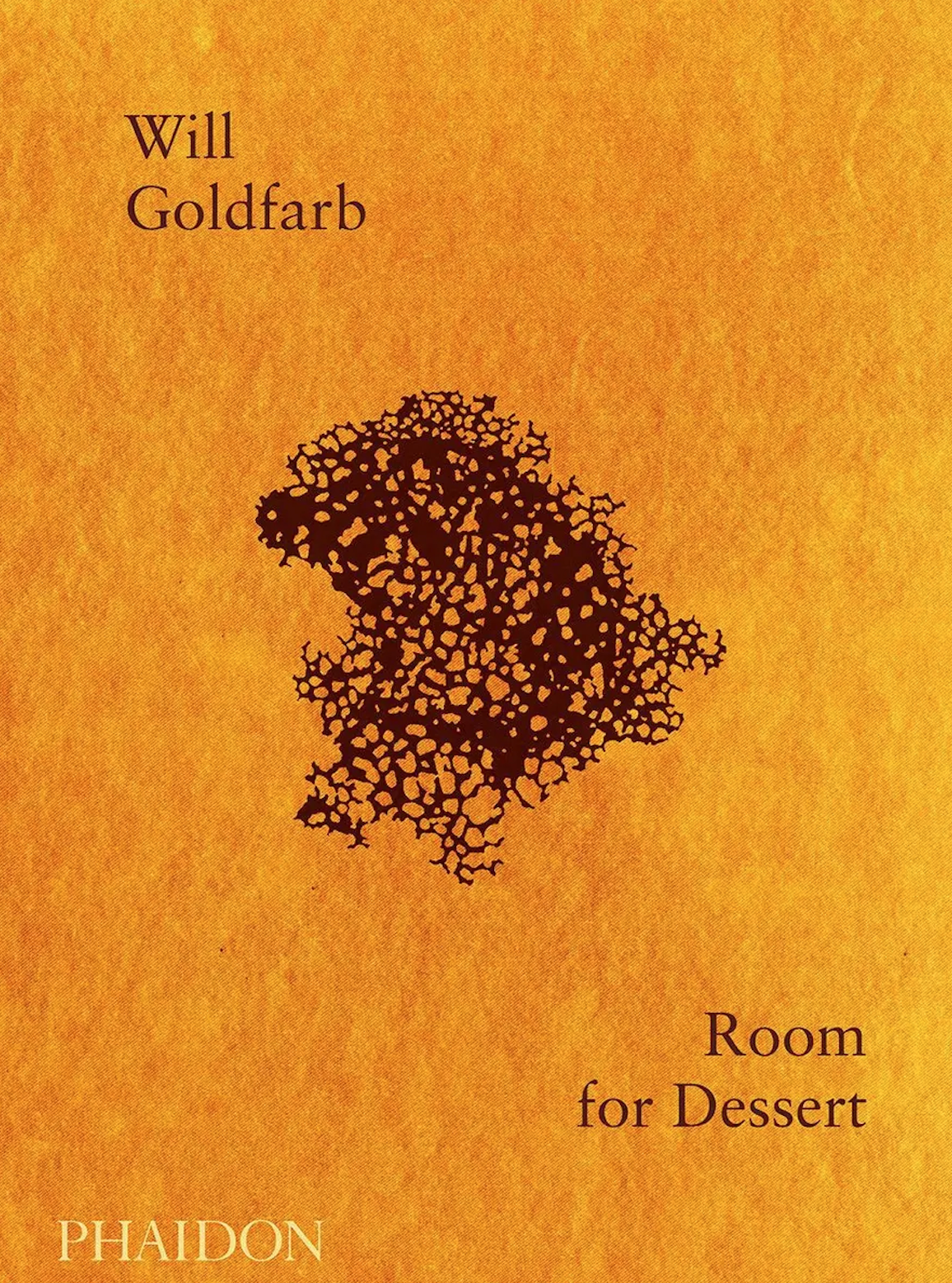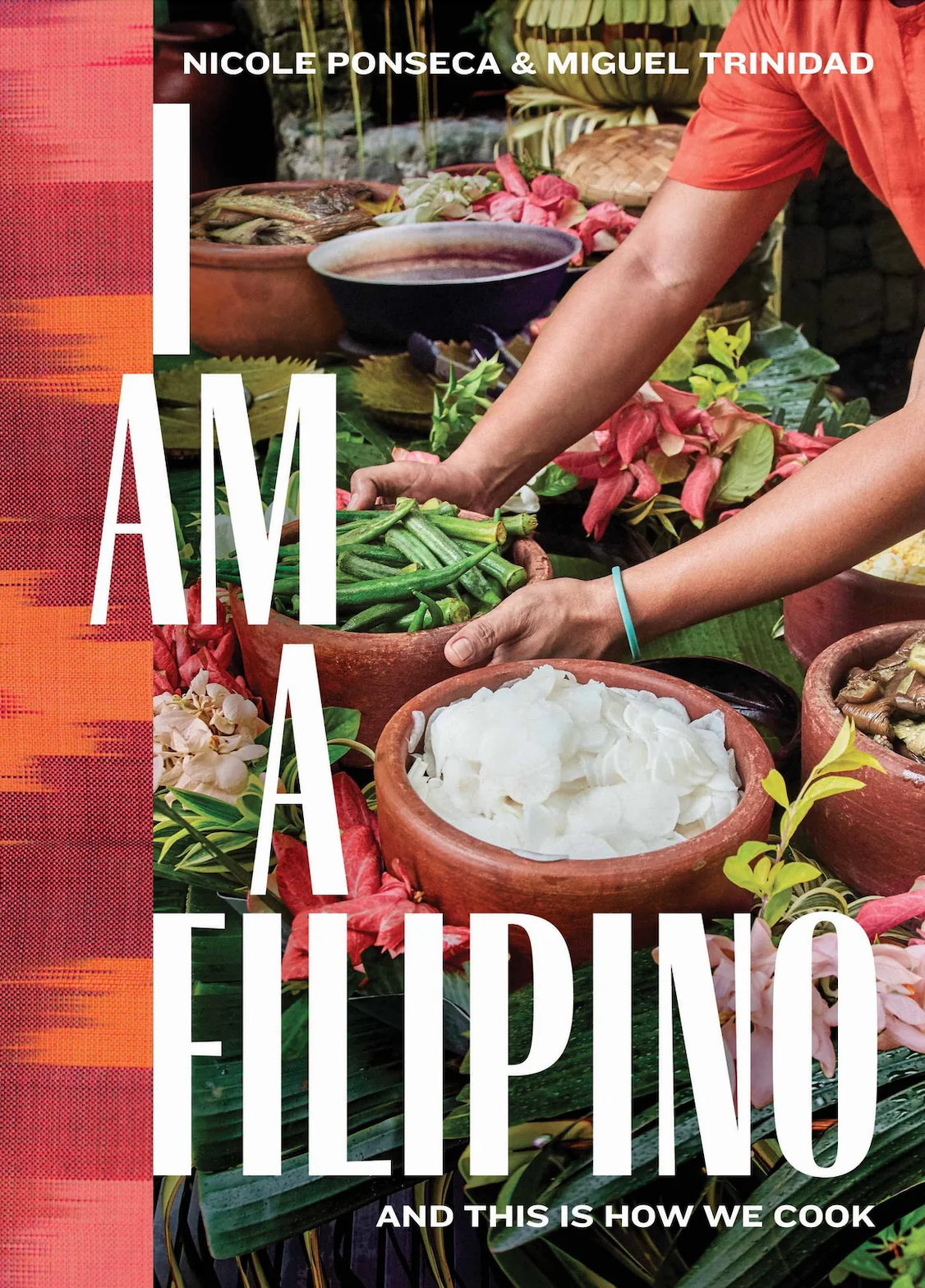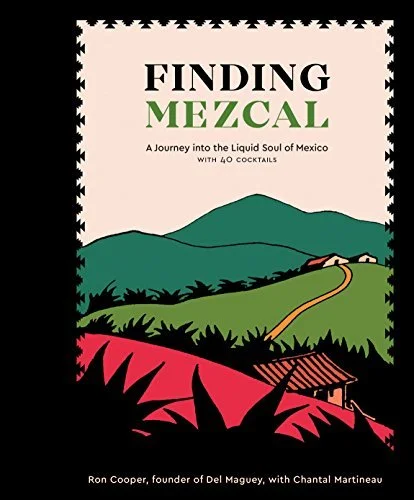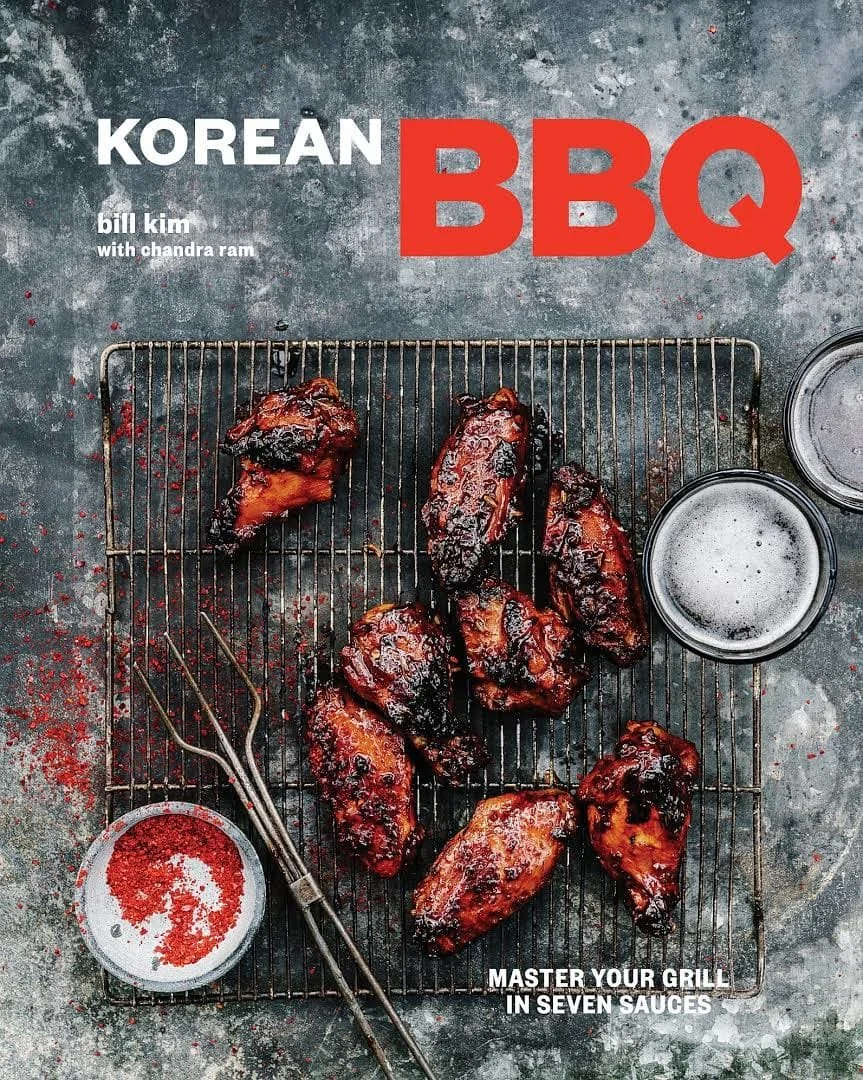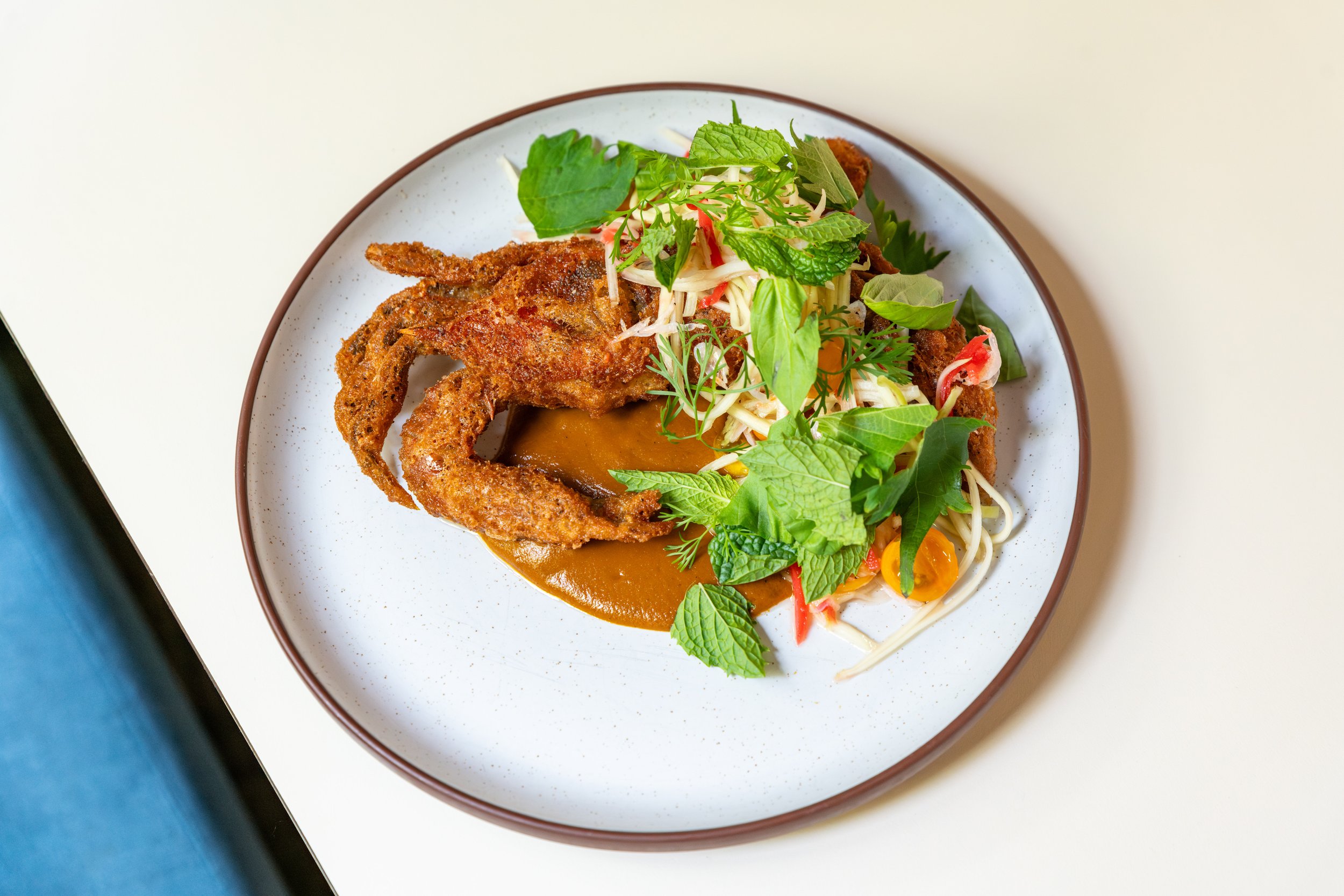Top Books for Cooks: 2018 In Review
It was a stellar year to make your shelf bend with new reads.
It was a stellar year to make your bookshelf bend with new reads. Among our Top Books for Cooks (and bartenders and sommeliers) are almost certainly new classics (you’ll be able spot them).
Some of our old faves published fabulous new books—kudos and congrats to Ori Menashe, Evan and Sarah Rich, Bill Kim, and Alon Shaya. Miguel Trinidad and Nicole Ponseca made a statement with their prescient I Am a Filipino. And it was an excellent year for Japan with its eponymous book by noted Japanophile Nancy Singleton Hachisu, as well as with Matt Abergel’s yakitori bible. For pastry, Will Goldfarb made a (surprise!) idiosyncratic contribution to the canon with a work that is as technical as it is entertaining. We would mention Joe Beef’s new book, but you probably already have it. And if you don’t have the remaining books on this list, you’re missing out!
SO, HERE IT GOES… STARCHEFS’ 2018 TOP PICKS
The Noma Guide to Fermentation
By David Zilber and René Redzepi
Who It’s For: The fermentation freak, the chef with endless glass jars and vacuum bags, who wants to build layer upon layer of flavor into their dishes.
Why Buy It: Move over, Sandor Katz. The most definitive guide to fermented food since the Art of Fermentation has arrived. Take a deep dive into the funky depths of the Nordic Food lab. Adding just one of these recipes to your arsenal will add a new layer of depth to the dishes coming out of your kitchen, and the techniques you’ll learn will give way to boundless creativity. But trust us, you’re going to want to stock your pantry with every single one: roasted chicken wing garum, coffee kombucha, lacto blueberries, koji “mole”, and more. There’s also a guide to all of the equipment you’ll need to start your own fermentation station. If there’s one book you buy this year, make it this one.
Fun Fact: Redzepi and the Noma team “discovered” lacto-fermentation by accident while trying to make ramson berry capers.
Room for Dessert
By Will Goldfarb
Who It’s For: For those who can’t make it to Bali. So, almost all of us! Also, for any chef (pastry or otherwise) who craves insight into the creative process and wants to refill their reserves of inspiration. (Plus, the cover of this golden Phaidon book is textured and feels smooth like panna cotta.)
Why Buy It: Pick a page and land on a new idea or ingredient or something that seems at first inexplicable. Goldfarb’s conceptual, sometimes esoteric, and ultra-original work is grounded on the page with tasty pop-cultural morsels that are woven into all his recipes, which are titled and accompanied by a quote and backstory. Inspirations include Tom Robbins’ novels, Robert Frost’s poetry, Radiohead, and Chef Davide Scabin. One sports-inspired fermented pineapple dessert called “Roger Federer” was inspired by a David Foster Wallace encomium of the tennis champ published in The New York Times. Goldfarb brings relatability to this tome, making his goldbar of a book unintimidating, his unconventional career accessible. Perhaps unexpectedly, he has penned a fun and practical cookbook.
Favorite Recipe: Loneliness: "Perhaps all the dragons in our lives are Princesses." ~ Rilke (p. 116)
I Am a Filipino: And This Is How We Cook
By Miguel Trinidad and Nicole Ponseca
Who It’s For: The chef who wants to learn the difference between kinilaw and kilawen and better blend cultures on the plate like Filipino home cooks have for centuries.
Why Buy It: Authors Nicole Ponseca and Miguel Trinidad introduce a new vocabulary (literally by weaving in Tagalog) and culinary repertoire for American chefs—as well as to home cooks adventurous enough to ferment their own red snapper and cook with pork blood. While there are elements of dishes that will feel familiar to students of Spanish, Caribbean, and Chinese cuisines, Ponseca and Trinidad share the glories of their archipelago’s cross cultural currents. If you want to to eat as much Filipino food as we do, dive in.
Fun Fact: Sisig wasn’t always sizzling or porky. Its was originally a chopped salad of sour fruits tossed in vinegar. The theory goes: when occupying American troops threw out pigs heads, Filipino cooks snagged the heads and adapted the dish.
Finding Mezcal: A Journey Into the Liquid Soul of Mexico
B
y Ron Cooper with Chantal Martineau
Who It’s For: For those with a thirst for knowledge who are tired of scraping together wisdom from strained conversations with bartenders, squinting at labels, and from stories told by friends who have traveled to Mexico in search of a holy grail full of mezcal.
Why Buy It: Ron Cooper wrote a book on mezcal, so, nuf’ said. But if you need more details: This book is part memoir, part biography of a business, and part history (emphasis on story) of the land, the people, and the processes behind mezcal.
Fun Fact: In the mid 1990s at the beginning of Cooper’s journey, he slept in his bodega among tanks and cases of mezcal. His fingerprints have practically worn away from his decades in the field. Regarding his deteriorating prints, Cooper writes, “I’ve learned to practice letting go. That way, everything becomes a gift,” like this book and all the mezcal your sip after reading it.
The Sommelier's Atlas of Taste: A Field Guide to the Great Wines of Europe
By Rajat Parr and Jordan Mackay
Who It’s For: For the juice nerd who already has Kermit Lynch’s Adventures on the Wine Route, Jancis Robinson’s The Oxford Companion to Wine, Robinson & Hugh Johnson’s The World Atlas of Wine, and Peter Liem’s Champagne bending their shelf.
Why Buy It: To improve your blind tasting skills, to better describe aromas and flavors to diners, and to satisfy your drive to better understand how the wines of Europe should taste—appellation by appellation and soil by soil. By describing what they've learned in their years traveling and tasting, wine stars Rajat Parr and Jordan Mackay explore what flavor means, where it comes from, and how some of Europe's great producers embrace and leverage the varying conditions they face and the knowledge they've gained to create notable wines (Raj lists his top producers).
Pro Tip: A great resource if you're training for The Court and/or to become the next Somm Slam champion, or if you just want to rule the floor.
Japan: The Cookbook
By Nancy Singleton Hachisu
Who It’s For: Roundtrip flights from StarChefs HQ in Brooklyn to Tokyo start out at more than $1,000. Japan: The Cookbook costs $49.95. If the later value is more within you budget, this book is for you.
Why Buy It: Ask a chef where they most want to visit for culinary travel (and we have asked thousands of them), and nine times out of 10 the answer is Japan. The James Beard nominated author of Japanese Farm Food and Preserving the Japanese Way, Nancy Singleton Hachisu, has written a compendium that lives up to its title. She starts with Japanese food culture history beginning in 239 CE before diving into 395 pages-worth of recipes divided into 16 chapters including Raw, Vinegared, Grilled, and One-pots. The last chapter features recipes from specific chefs listed with their restaurants’ name and address, including from Japanese restaurants outside Japan, such as Jamison Blankenship’s Chuko Ramen in New York. In the back, Singleton has compiled an extensive glossary and index, as well as sections on “Useful Japanese Kitchen Equipment” and “Japanese Cutting Styles.”
Favorite Recipe: Salt-grilled Turban Shells (p. 260)
Cocktail Codex: Fundamentals, Formulas, Evolutions
By Alex Day, Nick Fauchald, and David Kaplan with Devon Tarby
Who It’s For: Anyone interested in the collision of flavor, technique, and the creative process from within the D&C braintrust
Why Buy It: For the second book from the legendary team behind Death & Co., six cocktail categories give the book its structure: old-fashioned, martini, daiquiri, sidecar, whiskey highball, and flip. From their the team experiments with bases, balance, seasoning, and/or techniques such as infusing smoke. You'll be right there with them as their cocktail gears turn, ideas crystallize, flavors concentrate, and drinks come to life. There are plenty photos and infographics to help guide you along the way, too. Bonus! An appendix includes additional cocktail specs, as well as recipes, tips, and instructions for syrups, cordials, infusions, house mixes, sodas, salts and rims, solutions, tinctures, and concentrates. And when you’re ready for more, team Codex provides a list of their favorite web and print resources. You'll wearout this books to frayed ends and becomes bffs with Team D&C.
Favorite Recipe: Our Ideal Gin Martini (p. 62)
Chicken and Charcoal: Yakitori, Yardbird, Hong Kong
By Matt Abergel
Who It’s For: The chef who wants to open a yakitori stall in their city’s newest food hall (we know there’s at least one), or just wants a better way to use the whole bird in his or her kitchen.
Why Buy It: Matt Abergel has created the guide to all things yakitori: butchery, skewering, seasoning, grill prep, cooking, garnishing, and plating. It’s the best parts of a restaurant cookbook (the stories, the people, the recipes) and the best parts of your culinary school textbook (the step-by-step photo guides) rolled into one. Want to know how to break down soft knee bone or the ventricle for grilling? He’s got you covered. There’s grilled pesto chicken-inspired green miso breast, too, and duck meatball skewers dipped in duck tare. To round it out, the back of the books has recipes for pickles, small and large plates, and an extensive set of cocktail recipes (all the highballs, y'all).
Fun Fact: Sixty-nine members of Abergel's past and present staff are pictured yearbook-style in the back of the book along with a "Staff Q&A." One Q is "Favorite swear word;" "fuck" comes up a fair amount.
Bestia: Bold Italian Cooking
By Genevieve Gergis, Lesley Suter, and Ori Menashe
Who It’s For: The intuitive cook who wants to open a restaurant with soul (that also happens to serve 160,000 covers a year … holy shit!)
Why Buy It: Ori Menashe and Genevieve Gergis are experts in inserting precise flavor (and intrigue) into dishes while keeping them wholly approachable and absolutely unforgettable. There are two camps of diners at Bestia: Team Chicken Liver Paté (p. 119) and Team Chopped Chicken Livers (p. 121)—one smooth and refined and one rough-and-tumble rustic. And the two represent the duality and magic in Menashe’s cooking. What does White ‘Nduja mean? How many salsa verdes should you have in your repertoire? How does one make Squid Ink Bottarga? Buy the book and consult pages 44, 84, 53, respectively.
Fun Fact: An original Bestia Yelp! reviewer said that that Bestia was on “the corner of Crack and Murder.” Hahahahahahahaha … they were wrong.
Joe Beef: Surviving the Apocalypse, Another Cookbook of Sorts
By David McMillan, Frédéric Morin, and Meredith Erickson
Who It’s For: The chef who wants to look for inspiration beyond the 1:1 photos of Instagram. Get out there!
Why Buy It: In their second cookbook, Morin and McMillan deliver more of the restaurant’s fortifying and occasionally zany recipes, along with the perspective and stories of two curmudgeon-y creative geniuses. Joe Beef: Surviving the Apocalypse eschews social media for inspiration and turns instead to PBS, community, bad puns (à la Munster Mash on p. 254), a former employee’s curry (p. 181), and necks from the deer you shot at dawn (p. 185). Everything is valid as a jumping point for creativity. It’s less tongue-in-cheek than a way of life. It’s a book to help you remember why you started cooking in the first place: the food, the people, and an abiding love of restaurants.
Favorite Recipe: Egg Roll Salad Sausage Variation (p. 94)
A Very Serious Cookbook: Contra Wildair
By Alison Roman, Fabián von Hauske, and Jeremiah Stone
Who It’s For: The chef who’s been admiring from afar since Contra opened in 2013.
Why Buy It: 2018 may be the year of the chef-duo cookbook, and this debut effort is no exception. It’s the first book from Chefs Jeremiah Stone and Fabian Von Hauske (with writer Alison Roman), and the first time the recipes (over 85 of ‘em) of Contra and Wildair have been featured extensively in print. The book is broken down into three sections: Always (staple, restaurant defining dishes), Sometimes (seasonal, ripe-for-riffing dishes), and Never (one-offs, guest chef dinners, event bites) that serve as inspiration for chefs anywhere. There’s also musings on natural wine, micro greens, locality, and collaboration. It’s chef candy.
Favorite Recipe: Fluke, Pineapple, ‘Nduja (p. 34)
Korean BBQ: Master Your Grill In Seven Sauces
B
y Bill Kim with Chandra Ram
Who It’s For: For any Korean food novice who wants to go beyond fried chicken and kimchi on their menu. Also, for anyone into unbridled flavor.
Why Buy Itt: Next generation immigrant cuisine is the reason to dine out in America today, and Charlie Trotter protégé Bill Kim was one of the forerunners of the movement, starting in 2008 with the opening of modern noodle and dumpling house Urbanbelly, followed by Belly Shack and BellyQ. Kim’s straightforward intention with this, his first book, is all in the title. He puts it a bit more colloquially on p. 13 before he gets to the basics: How to Kung Fu Your BBQ. Kim also instructs how to build your pantry (traditional: gochujang, to the untraditional: Greek yogurt), and then moves onto the titular sauces plus three spice rubs: Korean BBQ, Lemongrass Chili, Soy Balsamic, Ko-Rican (Kim’s wife is Puerto Rican), Nuoc Cham, Magic Paste(!), Korean Pesto, Blackening Seasoning, Curry Salt, BBQ Spice Rub. Each sauce/rub is followed by a series of recommended applications and recipes. Kim makes it easy to literally spice up your repertoire and kickstart your deep dive into Korean food.
Rich Table: A Cookbook for Making Beautiful Meals at Home
By Evan Rich and Sarah Rich
Who It’s For: All the fanboys and fangirls!
Why Buy It: In 2012, they may have been among the first. As the heyday of ultra fine-dining started to descend, Evan and Sarah Rich poured their blood, sweat, and Bouley-Quince-Coi training into opening a neighborhood restaurant that would become known far beyond the perimeters of Hayes Valley in San Francisco. Now almost every chef, no matter their training and experience, wants to open a “neighborhood” joint. They're the king and queen of comfort revitalized lasagna, making it a viable menu option at chef-driven spots. Pancakes, pappardelle, peaches, pistachios, pâte à choux ... no matter how ordinary the ingredient, chefs and the adoring dining public are still lining up six years in to taste their interpretations. From bread and butter to Brussels sprouts and bucatini and even cocktails, Rich Table is a resource for and reminder of chefs’ who have found their voice and translated it into a successful, sustainable business.
Favorite Recipe: Douglas Fir Pierogi with Gouda and Chicory (p. 183)



